Rock Rose is a fast-growing evergreen Texas native shrub, typically found in the rocky woods and limestone outcrops of Central and Western Texas.
It’s known for its showy, hibiscus-like pink blooms, drought resistance, and low maintenance requirements, making it an excellent choice for new or experienced Texas native gardeners alike who are looking to add native plants to their landscapes.
Rock Rose displays resilience in challenging conditions. It can do quite well under full, direct sunlight (although it might wilt in late spring and summer afternoons), but it rarely, if ever, needs watering and can withstand poor soil conditions. It blooms throughout late spring, summer, and early fall.
In my landscape, I've come to find the Rock Rose as a consistent source of color in the mornings, even as temperatures rise into summer.
Rock Rose Quick Facts
Common Name(s): Rock Rose, Texas Rock Rose
Latin Name: Pavonia lasiopetal (Puh-VOH-nee-uh la-see-oh-PET-al)
Height: 1– 3 feet tall, but can reach 5 feet tall.
Soil Conditions: Well-drained, dry shallow soils. In the natural areas, these plants grow in shallow limestone and rocky woodlands.
Water: Low. Occasional watering during droughts can encourage fuller blooms.
Light: It can tolerate full sunlight. But in a perfect world, the Rock Rose should receive full sun exposure in the morning and midday, followed by afternoon shade during the hottest part of the day. Again, it can handle full sun, but the plant may appear a bit wilted without the afternoon shade, and the blooms will close.
Family: Malvaceae (Mallow Family)

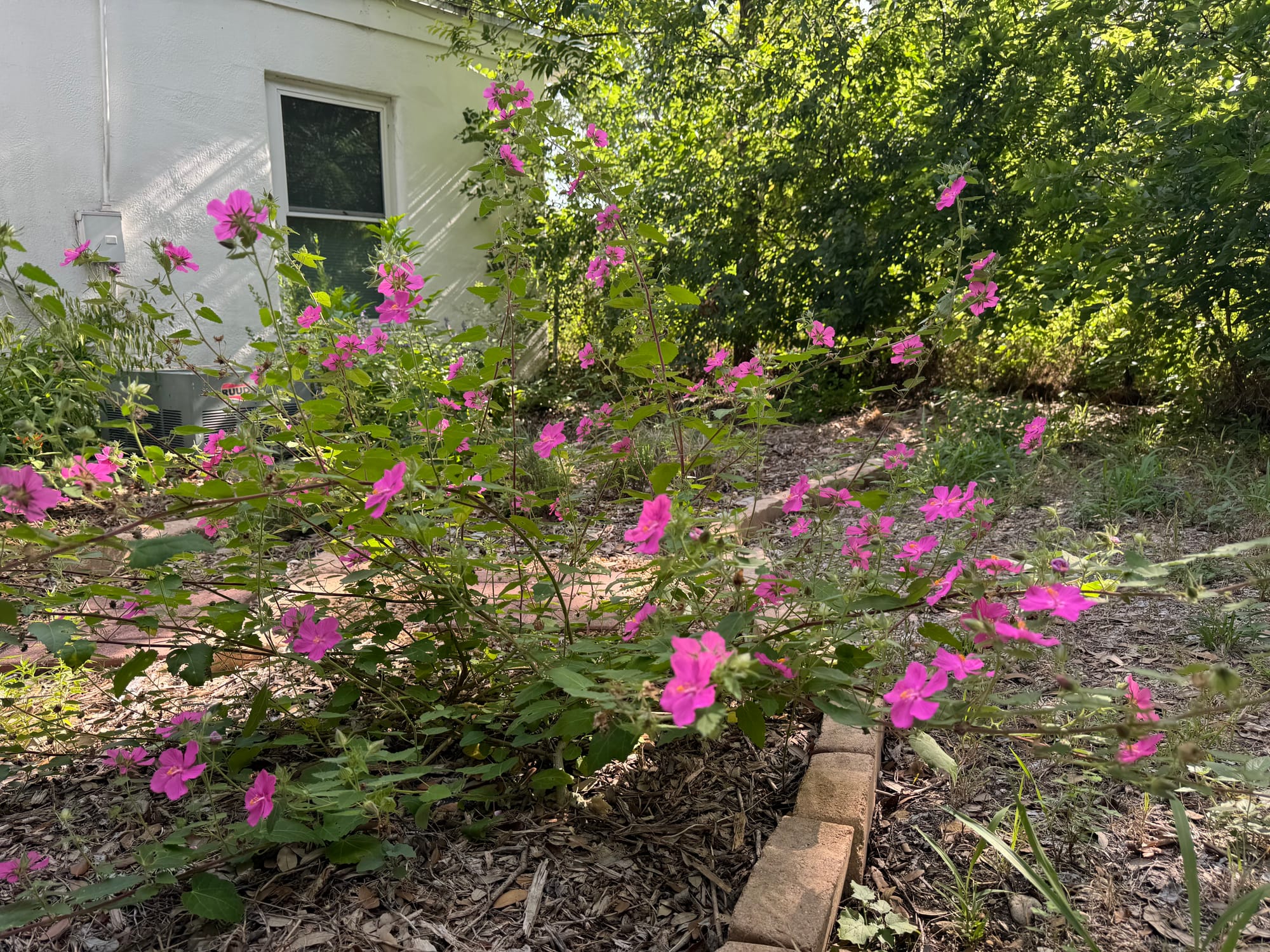
Distribution–Where is Rock Rose Native?
Rock Rose is native to the rocky woods and limestone outcrops of Central and West Texas. Its natural habitat extends from the Edwards Plateau through the Rio Grande Plains and into adjacent areas of Mexico.
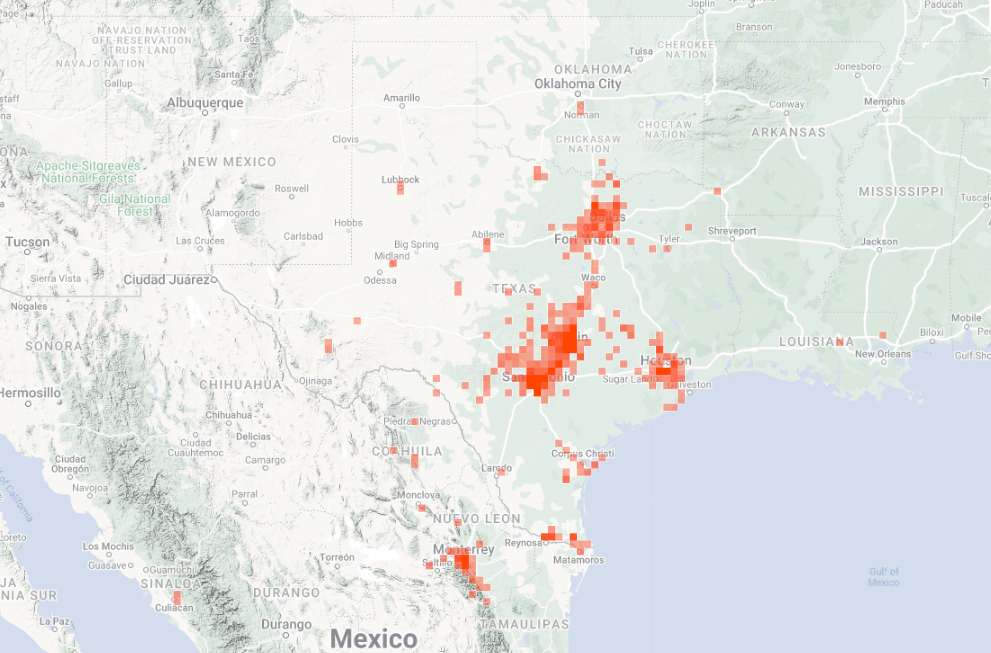
Rock Rose is relatively uncommon in its natural environment, but thanks to the nursery trade, it has become a familiar sight in Texas landscapes. In San Antonio, it's most recently become a popular choice in city-maintained landscapes given its low water needs, low maintenance, and ability to tolerate heat and sun.
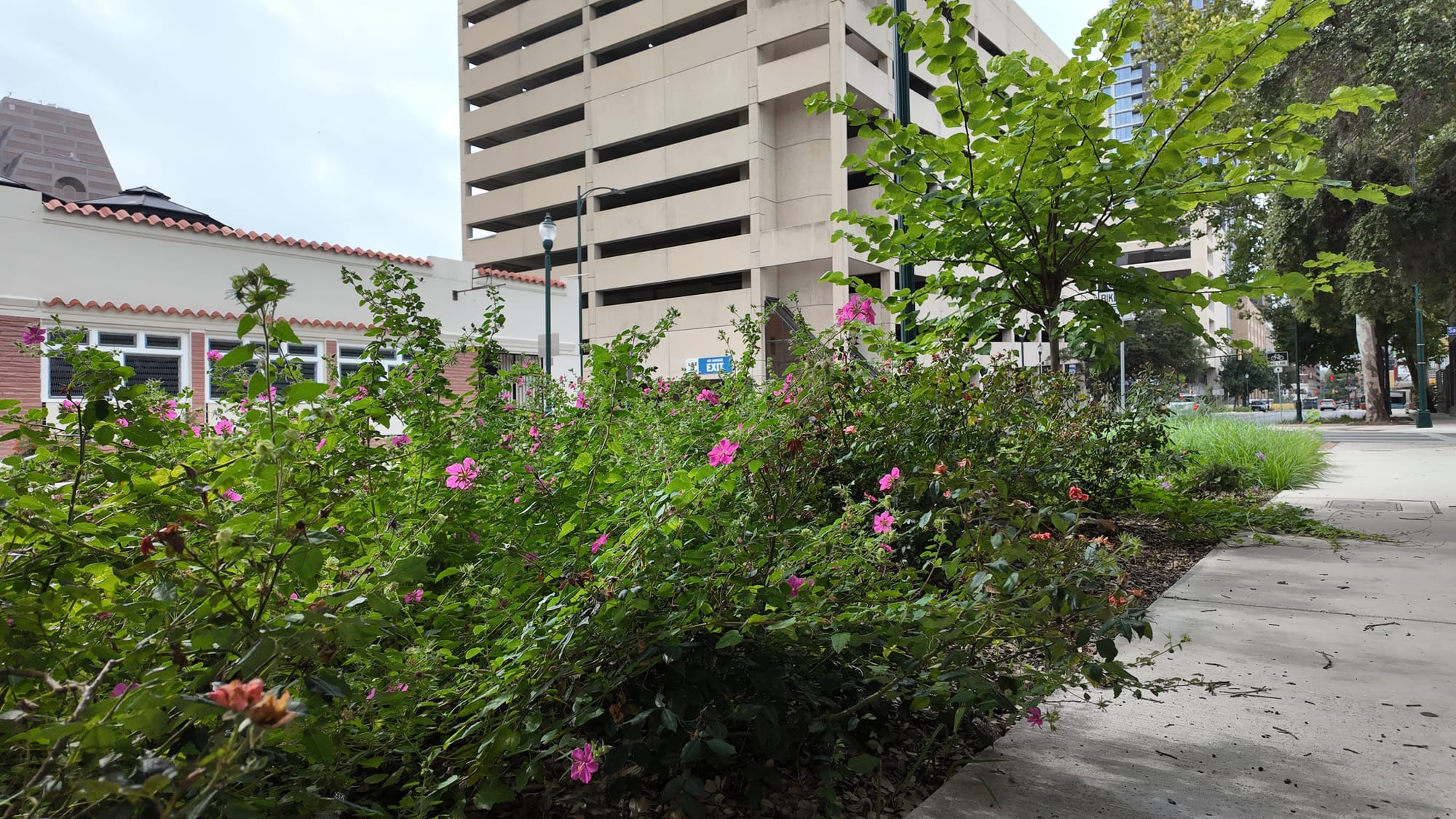
The Benefits of Rock Rose
For Your Landscape
- Attractive blooms–Rock Rose offers an eye-catching display of pink flowers throughout spring and summer, most prolifically in the mornings. Their blooms open in the morning and close in the early afternoon during the hottest part of the day. The Rock Rose is well worth considering if you want some extra color in your landscape when much of it has faded as summer heat arrives.
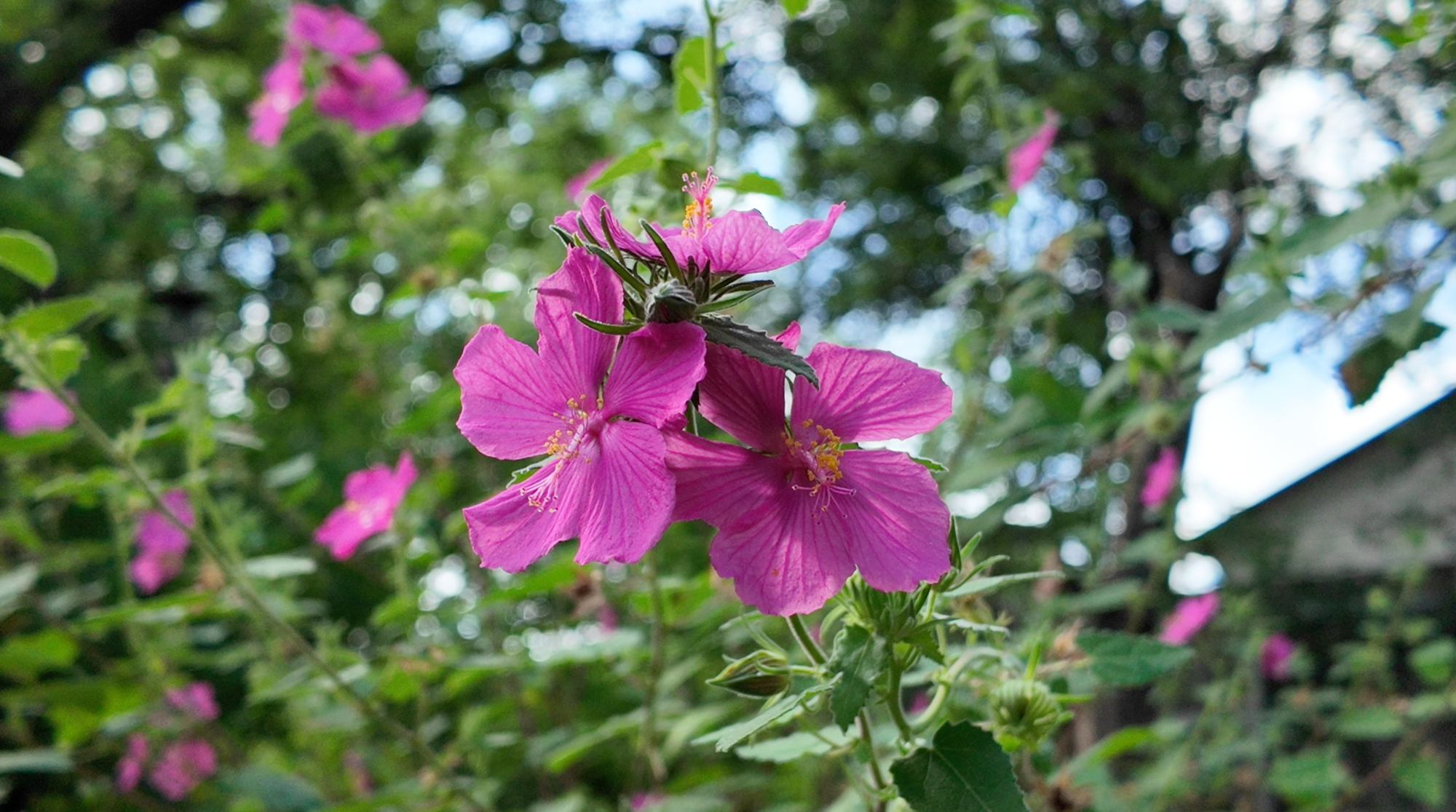
- Drought-resistant–Rock Roses have deep root systems that help them access moisture even during dry spells. You can explicitly select a drier location on your property to plant a Rock Rose, and after it's established, you won't need to worry about any supplemental watering.
- Low-maintenance—Once established, Rock Roses rarely need watering. They do quite well with neglect. They can benefit from the occasional pruning, but only to maintain their shape and remove any dead or damaged branches. I'll share more on pruning the Rock Rose below.
For Wildlife
- Nectar Source–Rock Rose’s nectar attracts bees, nectar butterflies, and nectar moths. They attract hummingbirds, too, although I’ve yet to see one visit.
- Deer Browse–Rock Roses can be a food source for white-tailed deer, especially during harsh winters when most other plants die down. So, keep in mind that the Rock Rose can potentially be an asset to protect some of your higher-value plantings, young trees, etc.
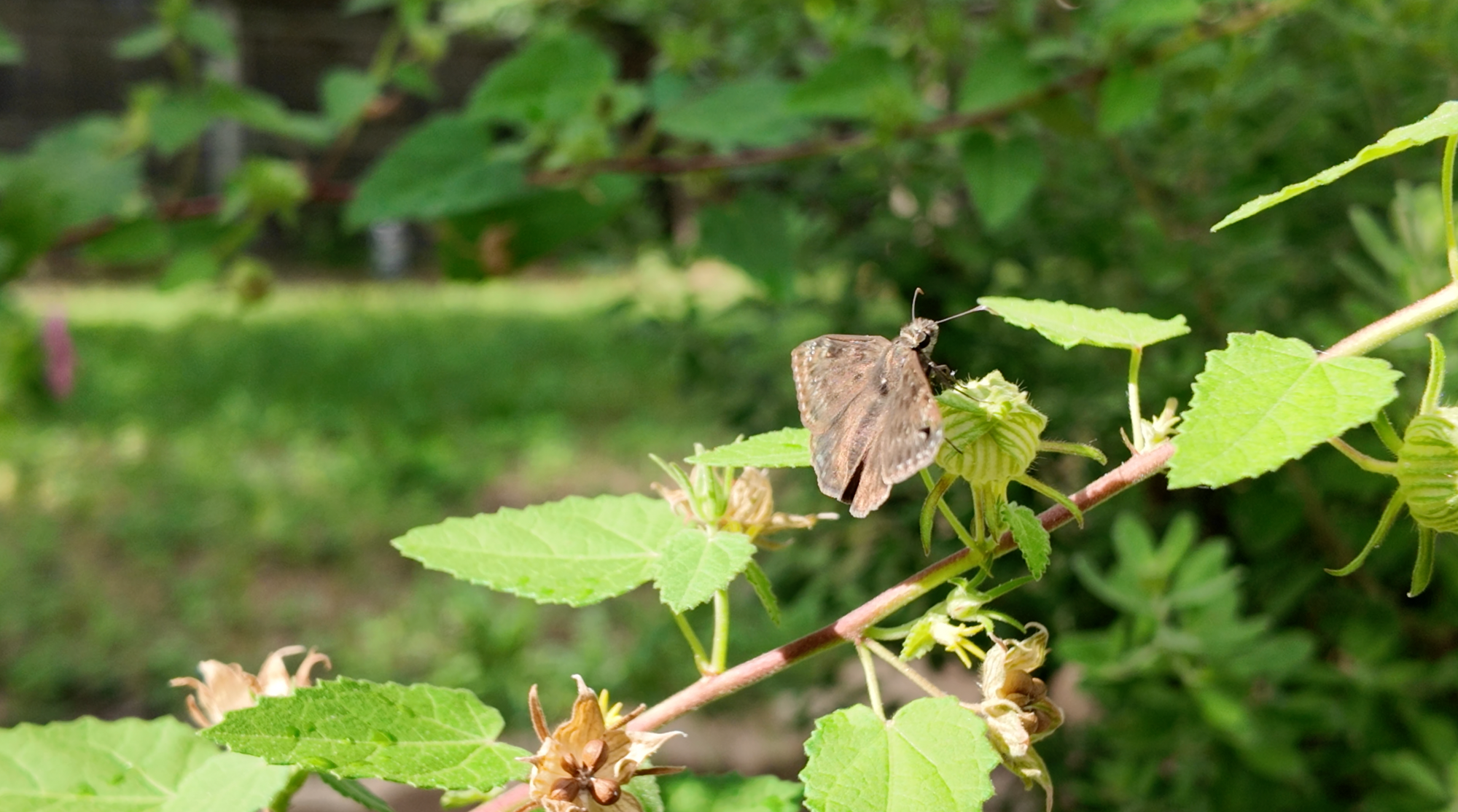
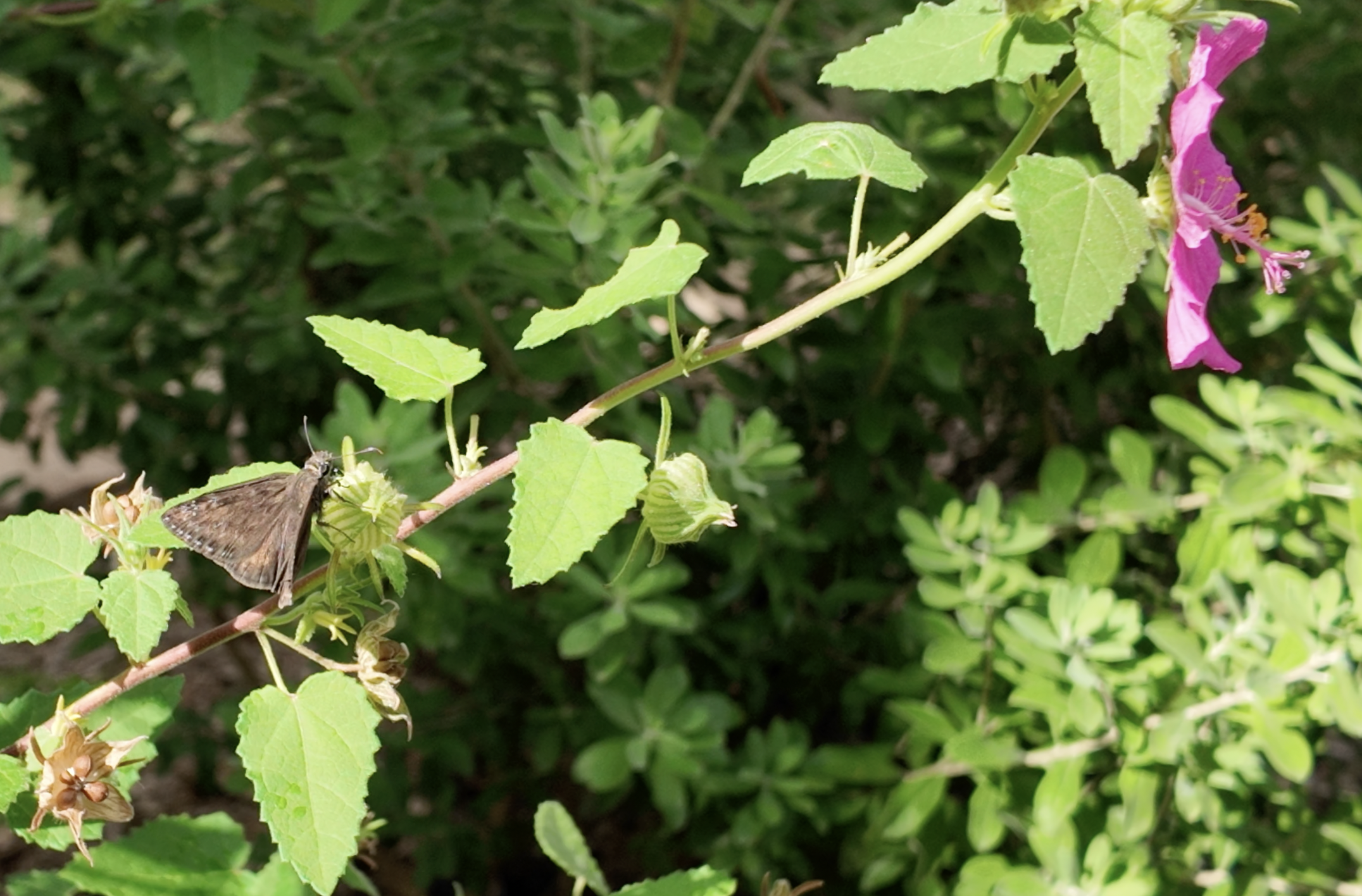
Nectar Moth enjoying our Rock Rose.
Planting & Care
Where to Plant a Rock-Rose:
- Drier Locations on Your Property–Given the Rock Rose's preference for and ability to withstand drier conditions, it's valuable to pick a site that's drier in your landscape.
- Morning Sun/Afternoon Shade–If possible, find a spot that receives intense morning sun and then starts to receive some shade in the afternoon. This is difficult for me, as it's typically the other way around on my property. Rock Rose will most certainly survive (and thrive) in the direct sun all day, just the more shaded the plant is in the afternoon when it's hottest, the longer the blooms will remain open throughout the day.
Care/Maintenance: Rock Rose requires minimal care, especially if planted in the right location (see above). However, here are some things that you might be worth thinking about if you're considering planting the Rock Rose or troubleshooting some issues with an existing planting:
- Winter protection: Rock Rose handles most winter conditions across the state without dying back completely. However, if you live north of Dallas, where temperatures might dip lower more frequently, consider providing some extra winter protection. This could be in the form of fresh mulch to insulate the soil and prevent damage from dry winter winds or a south-facing wall to ensure a strong spring comeback.
- Soil Conditions: Rock Rose prefers well-drained soil and can suffer from fungal issues like powdery mildew when left in wet conditioners. If the plant develops powdery mildew, what I found most effective is to stop any supplemental watering and prune back affected areas. New growth will eventually return as the temperature turns hotter and dryer.
- Life Span: Rock Rose is actually a short-lived plant with a lifespan of just three to four years. However, after years 1 and 2, you should notice some new seedlings starting to sprout up near the mother plant as it spreads its seeds. Be sure to leave some of those seedlings, as they will eventually replace the mother plant.
- Pruning: Rock Rose doesn't have to be pruned, but it can benefit from it as blooms only come on new wood. Rock Rose can also get a bit leggy, so keeping it nice and compact will help with more profuse, consistent blooming and keep the plant a more landscape-friendly shape. According to Native Texas Plants, the Rock Rose can be pruned anytime between February to October if it becomes "too leggy."
Companion Plants:
Here are some potential companion plants to partner up with the Rock Rose:
- Flame Acanthus
- Yaupon Holly
- Texas Redbud
- Mexican Plum
- Mealy Blue Sage
- Cedar Elm
- Autumn Sage
- Cenizo
- Verbena
- Beargrass
- Lindheimer Muhly
Seasons: What to Expect
- Spring: Rock Roses begin blooming in late spring, producing an abundance of vibrant pink flowers. During this period, new shoots and leaves will emerge.
- Summer: Rock Roses continue to bloom throughout summer, with flowers often completely covering the foliage. They thrive in heat, so they’re perfect for the summer-dry climates we often experience in Texas.
- Fall: As fall approaches and temperatures become colder, the blooming display of flowers starts to slow down. Dead blooms release seed pods, which eventually dry out and split open to allow germination.
- Winter: During the winter months, Rock Roses enter a dormant state. Their foliage appears thinner, and their flowers are absent.
Propagation (Cuttings):
Rock Rose is best propagated using softwood cuttings taken from the stem between May through July. Semi-hardwood cuttings work, too, but they’re less reliable and often require more rooting hormones to encourage root growth.
Aim for a length of 3 to 6 inches and make a clean cut just below a leaf node (the little bump where a leaf meets the stem). Remove all the leaves except the top two or three.
To encourage faster root growth, dip the cut end of the stem in a rooting hormone solution, ideally between 3,000 to 5,000 ppm.
After prepping your cuttings, plant them in a well-draining potting mix and keep the soil moist. With proper care, roots should develop within three weeks and be transplanted into bigger pots four to five weeks later.
Sources
Along with personal experience and observations I've made of the Rock Rose out in Texas' natural places, here are all the books and resources that I consulted in producing this page:
Books
- Native Texas Gardens: Maximum Beauty Minimum Upkeep (Sally Wasowski)
- Wildflowers of the Texas Hill Country by Marshall Enquist
- Texas Wildcapes: Gardening for Wildlife by Noreen Damude and Kelly Conrad Bender
- Native Texas Plants: Landscaping Region by Region by Sally and Andy Wasowski
- How to Grow Native Plants of Texas and The Southwest by Jill Nokes
Websites
- (n.d.). Pavonia lasiopetala. Lady Bird Johnson Wildflower Center. https://www.wildflower.org/plants/result.php?id_plant=pala13

